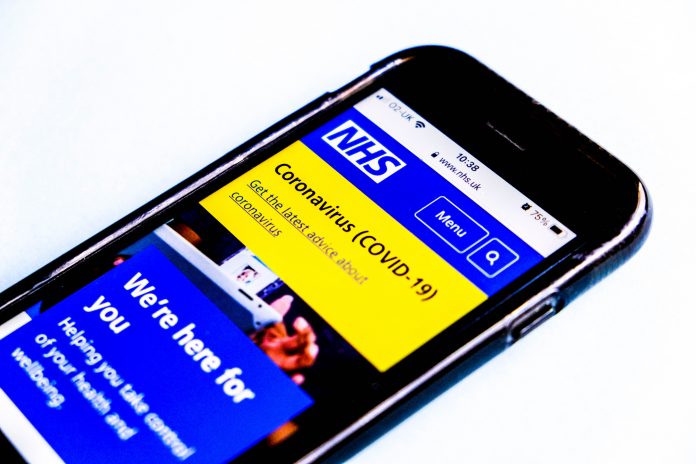Ben Davison, NHS Digital’s Executive Director for Product Development, explains how the coronavirus pandemic prompts a surge in the number of people using NHS tech in 2020
Digital services provided by the NHS saw a huge increase in usage throughout 2020 as a result of social distancing and the need to access healthcare remotely.
Every single tech service provided by NHS Digital has seen unprecedented levels of usage by both patients and frontline staff – with almost every single target smashed midway through the year.
There is no doubt the impact of the coronavirus (COVID-19) pandemic has been tragic, but it has also driven huge swathes of the population online and the fact that more and more people are choosing to access healthcare digitally is playing a huge part in easing pressure on services.
NHS website
Take the NHS website, for example. It’s one of the biggest health-related websites in the world; usually attracting around 360 million visits a year, which is around 30 million visits a month.
But it has since taken on an even more important role as a key platform in the NHS’ response to the coronavirus pandemic – with an estimated 873 million visits throughout 2020.
The number of users peaked in March 2020 with 120 million estimated visits (the highest ever) and again in September 2020 with 81 million estimated visits, and there were 179 million estimated visits to the coronavirus hub throughout the year.
NHS App
The NHS App has also played a major part in the COVID-19 response – by providing people with a simple and secure way to access a range of NHS services on their smartphone or tablet – from ordering repeat prescriptions to booking and cancelling GP appointments.
On January 1, 2020, 234,326 people were using the NHS App. Fast forward to December 31, 2020, and this figure had increased by 622% to 1,453,175 users.
The number of repeat prescription requests made via the app increased by 4905% — from 45,931 in January 2020 to 2,253,141 in December 2020, and the number of patient record views rose by 3,329% — from 258,404 in January 2020 to 8,603,392 in December 2020.
In the past, these people would have had to visit or phone their GP, but now they can manage key elements of their care remotely – making it easier for both the patient and practice staff during this challenging time.
NHS login
NHS login provides patients with a simple, secure and re-usable way to access multiple digital health and care services such as the NHS App.
The number of NHS login verified identities increased by 697% over the course of the year – from 238,638 at the start of January 2020 to 1,902,686 by December 31.
The number of partners that have integrated with NHS login increased from seven to 27 during 2020 – an increase of 285%.
NHS Pathways
NHS Pathways is the triage software, which every year directs nearly 19 million 111 and 999 triages to the most appropriate service available.
In 2020, the system was responsible for triaging 18,702,770 calls to 111 and 999, which is an 8.2% increase from 2019 when it triaged 17,290,174 calls.
This included an increase of 1,509,744 triaged calls to 111, as people sought to get COVID-19-related health advice.
NHS 111 online
Helping to manage this increased demand on 111 telephone services was NHS 111 online, which allows patients to get urgent healthcare online.
In the last six months of 2020 (01/07/2020 to 31/12/2020), 111 online recorded 3,549,190 sessions, which is a 215% increase on the same period in 2019 where there were 1,125,994 recorded sessions.
845,850 of all sessions during July to December 2020 were coronavirus related (23.8%).
Electronic Prescription Service (EPS)
EPS allows prescribers to send prescriptions electronically to a pharmacy of the patient’s choice (known as a nomination) – making the prescribing and dispensing process more efficient and convenient for both patients and staff.
The number of EPS nominations increased by over 25% in the last year – with numbers rising from 33.14 million on 3 January 2020 to 41.61 million on 1 January 2021.
To put this into context, this is a rise of 8.47 million last year compared with 33.14 million in the previous 10 years.
Microsoft Teams
And finally, Microsoft Teams was made available to NHS organisations for free in March 2020 (for a limited time period) to counter the increased risks associated with coronavirus.
NHS Digital finished rolling out the messaging tool to all NHSmail users between March 23rd and December 31st, it has been used to send 118 million chat messages and to host 26 million meetings.
Our busiest day in 2020 was Wednesday, December 16th when there were 237,997 active users and 1.02 million chat messages – compared with 60,937 active users and 0.35 million chat messages earlier in the year on March 31st.
The start of 2021 continues to show demand is on the increase – with Wednesday, January 6th figures showing 239,775 active users and 1.03 million chat messages.
Where do we go from here?
There’s no doubting that 2020 has been a challenging year for the NHS. Our teams have had to work harder and faster than ever to cope with the huge public demand for the many digital technologies across the NHS.
But it’s this technology that has enabled doctors, nurses and other health professionals deliver care remotely, where possible – freeing up time for those patients who need face-to-face care.
It’s this technology that is keeping people well while they isolate – with good information and advice, and the ability to manage things like prescriptions remotely.
We’re fully expecting the numbers using NHS tech to continue rising in 2021, as the general public continues to play a key role in helping to ease the burden on our fantastic frontline services.











